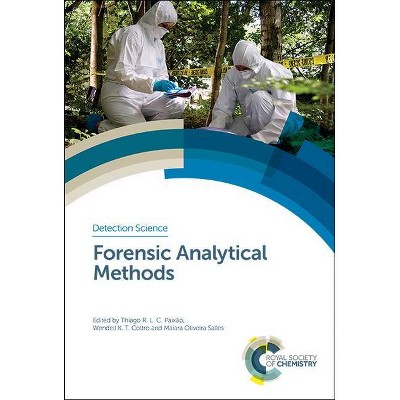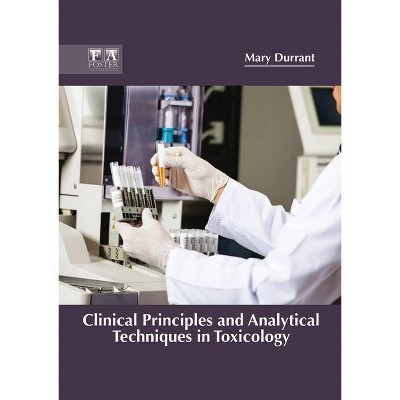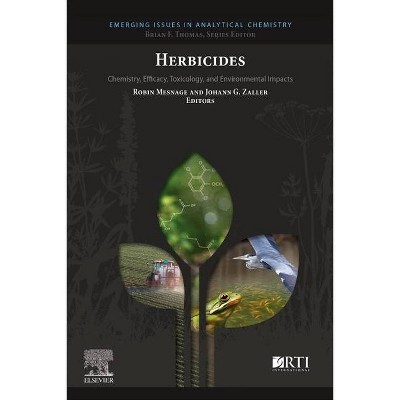Forensic Analytical Techniques - (Analytical Techniques in the Sciences (Ants)) by Stuart (Paperback)

Similar Products
Products of same category from the store
AllProduct info
<p/><br></br><p><b> About the Book </b></p></br></br>"The book will be an open learning / distance learning text in the Analytical Techniques for the Sciences (AnTS) covering analytical techniques used in forensic science. No prior knowledge of the analytical techniques will be required by the reader.An introductory chapter will provide an overview of the science of the materials used as forensic evidence. Each of the following chapters will describe the techniques used in forensic analysis. The theory, instrumentation and sampling techniques will be explained and examples of the application of each technique to particular forensic samples will be provided. The reader will be able to assess their understanding with the use of regular self assessment questions and discussion questions throughout the book. The user of the book will be able to apply their understanding to the application of specific techniques to particular analyses encountered in their professional life"--<p/><br></br><p><b> Book Synopsis </b></p></br></br>The book will be an open learning / distance learning text in the <i>Analytical Techniques for the Sciences (AnTS)</i> covering analytical techniques used in forensic science. No prior knowledge of the analytical techniques will be required by the reader. <p> An introductory chapter will provide an overview of the science of the materials used as forensic evidence. Each of the following chapters will describe the techniques used in forensic analysis. The theory, instrumentation and sampling techniques will be explained and examples of the application of each technique to particular forensic samples will be provided. The reader will be able to assess their understanding with the use of regular self assessment questions and discussion questions throughout the book. The user of the book will be able to apply their understanding to the application of specific techniques to particular analyses encountered in their professional life.</p><p/><br></br><p><b> From the Back Cover </b></p></br></br><p>The public profile of forensic science has dramatically increased in recent decades and during this period there has been considerable expansion in the application of modern analytical techniques to the examination of forensic problems, particularly as a consequence of the development of portable instrumentation. The availability of new techniques has led to a greater choice of tools that can potentially be employed to analyse forensic specimens. An understanding of a broad range of analytical tools is required by the modern day forensic chemist and is an important aspect of their training.</p> <p><b><i>Forensic Analytical Techniques</i></b> </p> <ul> <li>Clearly describes all the important analytical techniques used in forensic science</li> <li>Provides detailed descriptions of how each technique works and how to prepare specimens for analysis</li> <li>Offers explanations of how to analyse the data obtained</li> <li>Targets a growing market in courses in forensic sciences at senior undergraduate/graduate level and in dedicated professional forensic laboratories</li> <li>Provides a resource for the teaching of forensic analytical techniques</li> <li>Presents examples of specific applications of analytical techniques to forensic problems</li> <li>Follows an open-learning approach enabling readers to assess their understanding with the use of discussion questions and self-assessment questions</li> </ul> <p>This book is designed for students who are undertaking a forensic chemistry based program and require a sound knowledge of analytical techniques. It also provides a useful reference for forensic practitioners who may be interested in investigating new forms of evidence or techniques.</p> <p>The <b><i>Analytical Techniques in the Sciences</i></b> series of books provides coverage of all of the major analytical techniques and their application in the most important areas of physical, life and materials science. Each text is presented in an open learning/distance learning style, in which the learning objectives are clearly identified. The reader's understanding of the material is constantly evaluated by the use of self-assessment and discussion questions.</p><p/><br></br><p><b> Review Quotes </b></p></br></br><br><p>"I would recommend this work to chemistry students with an interest in the chemical analysis of forensic evidence." (<i>Chemistry & Industry</i>, 1 July 2013)</p><br><p/><br></br><p><b> About the Author </b></p></br></br><b>Barbara Stuart (BSc(Hons), MSc(Syd), PhD(Lond), DIC, MRSC, MRACI, Cchem)</b><br />After graduating with a BSc degree from the University of Sydney in Australia, Barbara Stuart worked as a tutor at this university. She also carried out research in the field of biophysical chemistry in the Department of Physical Chemistry and graduated with a MSc in 1990. The author moved to the UK to carry out doctoral studies in polymer engineering within the Department of Chemical Engineering and Chemical Technology at Imperial College (University of London). After obtaining her PhD in 1993, she took up a position as Lecturer in Physical Chemistry at the University of Greenwich in London. Barbara joined the staff at the University of Technology, Sydney, Australia in 1995, where she is currently a Senior Lecturer in the Department of Chemistry, Materials and Forensic Science. She is presently conducting research in the fields of polymer spectroscopy, materials conservation and forensic science. Barbara is the author of four books published by Wiley, Modern Infrared Spectroscopy, Biological Applications of Infrared Spectroscopy, Polymer Analysis and Infrared Spectroscopy: Fundamentals and Applications in the current ANTS series of texts and Analytical Techniques in Materials Conservation.
Price History
Price Archive shows prices from various stores, lets you see history and find the cheapest. There is no actual sale on the website. For all support, inquiry and suggestion messagescommunication@pricearchive.us




















